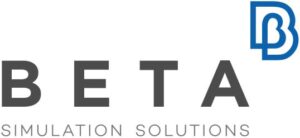CONNECT European Moldflow User Meeting
Save the Date – 15. and 16. June 2026
What an event!
With CONNECT, we tried out a completely new concept – and it worked. Things kicked off after a shared lunch with the Moldflow Rally: interactive workshops, lively discussions, and lots of exchange.
On the second day, the focus was on exciting presentations – as always featuring contributions from users, developers, and research institutes. It wasn’t just about new ideas and approaches, but also about great conversations and fresh impulses from all across Europe.
What made CONNECT stand out this year?
Dr. Sarah Frauholz, Covestro Deutschland AG, Engineering Department
Innovative Simulation Method for Ink Washout Prediction in Film Insert Molding
Film Insert Molding (FIM) represents a key technology for integrating decorated films into injection molded parts, enabling high-quality decorative and functional surfaces.
A significant challenge in FIM processes is ink washout, which can result in substantial scrap rates and development costs.
This study presents a novel simulation approach for predicting ink washout phenomena during the FIM process, specifically focusing on Polycarbonate films with black screen-printed designs. The methodology integrates a custom developed Moldflow® API to simulate the interaction between the injected thermoplastic melt and the printed film surface.
Initial validation tests were conducted using Covestro Makrofol® films. The simulation method enables proactive mold/gate design optimization, potentially eliminating ink washout issues before physical production begins. This advancement represents a significant step forward in FIM process optimization and quality assurance.
Dr. Robert Wesenjak, Hexagon AB, Senior Technical Specialist
Machine Learning for Structural Integrity: Uncertainty Quantification in Design
Dr. Sebastian Mönnich, PEG GmbH, Technischer Director
Armin Kech, Robert Bosch GmbH, Development Engineer
Bridging Virtual Product Design with Environmental Impact – a Summary
The talk presents insights from the nearly completed publicly funded project “DIGILaugBeh,” focused on sustainability in long glass fiber reinforced PP. Led by PTJ and funded by the BMWK, the project involves partners like Bosch, RWTH-IKV, Fraunhofer-ITWM, University of Stuttgart, M2M, PEG, and others.
The project combines Life Cycle Assessment (LCA) with process simulation using Moldflow—disciplines that are typically done separately. The goal is to assess environmental impacts (e.g., CO₂ footprint, energy use) during part design by integrating data from both areas.
A demonstrator based on a simplified washing machine part was developed for validation. A first prototype of the standalone tool is expected by June 2025, which will then be commercialized by e.g. PEG.
Prof. Dr.-Ing. Nils Meyer, Augsburg University, Professor
Injection Molding meets Machine Learning: Fast and Generalizable Approximation Models
During the initial design phase of a product or in design optimizations, it is often impractical to execute high-fidelity process simulations due to their computational demands. Consequently, it is advantageous to develop rapid approximative models employing machine learning that facilitate a prompt estimation of the mold filling outcome. The primary challenge lies in training such models with a limited quantity of training data and ensuring their generalizability to unseen geometries. With our approach employing engineered features, we can achieve up to 200 times acceleration while estimating the mold filling process with less than 10% error.
Biniam Gebreyohannes, forteq Group, Gear Specialist & Material Development Engineer
Simulation Integrated into Tool Design and Scientific Molding Process
Lead time and cost-effectiveness are critical factors for the success of projects involving the production of plastic parts for the automotive industry. To address these challenges, forteq is leveraging Moldflow simulation as a central tool for the entire industrialization process, from tool design to process parameter definition. After optimizing the tool design and simulating potential issues like shrinkage and warpage, we aim to directly apply Moldflow’s deflection compensation to cut our tools. Additionally, we plan to use the same process parameters from the simulation for the initial tool sampling. A workflow, along with examples, will be presented, and the first results will be discussed.
Dalil Chenouf, Yanfeng International, Advanced Manufacturing Engineer
Autodesk Moldflow at Yanfeng: from RFQ to production
Discover how Yanfeng has integrated Autodesk Moldflow into its workflow—from RFQ to production—optimizing processes, improving part quality, and creating the link between simulation and real-world manufacturing. Our approach supports better project execution and continuous improvement in manufacturing performance.
Prof. Guido Tosello, DTU Copenhagen, Professor
Effectiveness of injection molding simulations for the prediction of flash formation
Flash defect, an undesirable excess material formation at the interface of mold cavities, poses significant challenges in manufacturing processes by compromising product quality and increasing production costs. To address this issue, we carried out numerical simulations using Autodesk® Moldflow® to model the injection molding process and predict the occurrence of flash defects under various operating conditions. These simulation results are then compared with experimental findings obtained from physical molding trials. This allowed us to evaluate the effectiveness and accuracy of the simulations. By systematically analyzing the deviations between simulation results and experimental data, insights into the underlying mechanisms of flash formation and factors influencing its occurrence are gained. Guidelines for effective simulation flash formation are also extracted as a result of the investigation. After validating the accuracy of the simulation results with experiments, the model can be used to generate a simulated dataset which essential to train AI-based algorithms for much faster and cost-effective predictions.
Research & Development, Moldflow Product Update
At the CONNECT Moldflow User Meeting, Hanno van Raalte will present what’s new in Autodesk® Moldflow® 2026, including key enhancements such as improved solver performance, default activation of the STAMP warpage model for 3D meshes, and new export capabilities like MP4 animation. These updates aim to streamline workflows and improve result accuracy. Franco Costa will provide an R&D outlook on the future of Moldflow, highlighting upcoming developments in cooling optimization, advanced valve gate control, and improved simulations for overmolding and injection compression molding. Together, these sessions offer valuable insights into the current and future direction of Moldflow technology.
Presentations from the Moldflow development and users
Moldflow Rallye covering the latest topics (automation, modelling, result interpretation and more)
Evening event and networking
Exhibitors & Sponsors
Autodesk Inc.

inpro GmbH

Beaumont Inc.

BETA CAE Systems

PEG Plastics Engineering Group

Product Innovation Lounge by MFS GmbH




